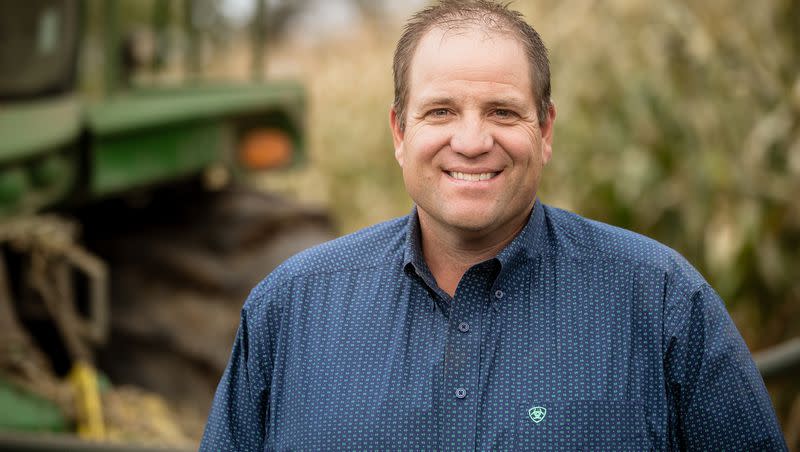Opinion: How these Utah farmers and ranchers celebrate Earth Day all year

With the arrival of spring — delayed as it may be — many are drawn to the outdoors to enjoy the warming weather and the renewal of life that takes place with the plants and animals. Spring is also the time when many come to celebrate Earth Day, which this year takes place on April 22.
Food is the most obvious connection between farmers and ranchers and their customers, but they also share a love for the environment with many Utahns. They care for the land and water as a stewardship, to make sure they can produce food for years to come. They also know it’s the right thing to do — you might consider them the original environmentalists.
Sustainability and efficiency on the farm go hand-in-hand. Farmers today are doing more with less thanks to innovation and technology. Smarter farm equipment, precision agriculture tools and biotechnology are helping farmers care for their crops while using less water, fertilizer and pesticides.
Focused on water
No discussion about our environment and the work our farmers are doing would be complete without talking about water. The people who grow our food stand on the front lines of water concerns. They are the first who suffer the effects of drought and feel it more severely. This has been the case recently as we thankfully deal with the consequences of a huge water year, with flooding delaying planting.
Related
Utah farmers and ranchers want to be wise water users in the future as they have been for the past 175-plus years. For decades, farmers and irrigation companies throughout the state have worked to pipe canals and convert to irrigation methods better suited to local conditions. Currently, they are working with the Utah Department of Agriculture and Food through water optimization grants to complete projects that are producing real results. Thankfully, this past legislative session saw an additional $200 million dollars allocated to water optimization programs.
Conservation in action
Many farmers and ranchers make a special effort to conserve water for future use. This is the case with Butch and Jeanie Jensen’s fifth-generation Tavaputs Ranch, located in Carbon County.
Because the location of their ranch makes it prone to drought every 10 years, the family conserves water as much as possible. They have developed springs, fenced livestock out of active waterways, built runoff ponds and drilled a well to supply water for their livestock, all of which have also helped the issue of water pollution there.
Another example is the Heaton cattle ranch in Kane and Garfield counties, which has more than 140,000 acres of private and federal land that supports abundant wildlife populations of sage grouse and mule deer herds.
Related
Communities team up to offer rain barrels as a way to save water
Inside what the Church of Jesus Christ is doing to save water and the Great Salt Lake
The Heatons utilize conservation practices to improve grasslands, water quality and wildlife habitat. Enhancements to water quality have included creating and restoring more than 50 stock ponds, improving irrigation systems and developing a spring through the installation of a solar pump.
Different scale, same commitment
While the conservation projects ranching families have undertaken certainly are impressive because of their scope and size, farmers in the more urban areas of Utah are no less committed.
Farmers look to balance productivity with conservation efforts related to water and air quality, and ways to promote pollinators, such as bees and monarch butterflies. Farmers plant crops using a rotation system to improve soil health, plant buffer zones to keep soil in place and prevent damage to water sources, and plant cover crops, which are plants grown to protect and enrich the soil by putting nutrients back into it.
No matter the scale, location, or type of agriculture they’re involved with, Utahns can rest assured that local farmers and ranchers are committed to the wise use of natural resources. They see feeding and clothing the world as a noble profession and are committed to passing on this legacy to the next generation.
Ron Gibson, a sixth generation dairy farmer from Weber County, is the president of the Utah Farm Bureau Federation.

